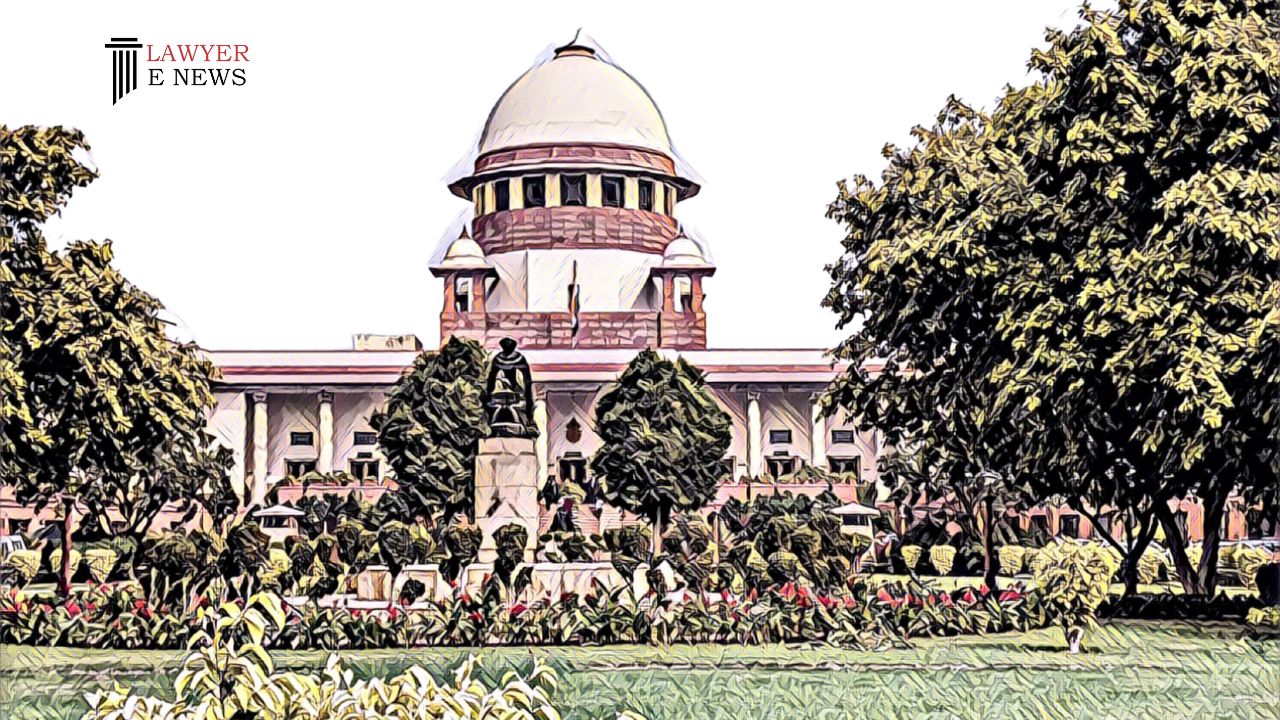-
by Admin
14 December 2025 5:24 PM



Supreme Court held in the recent Judgement (INDRAJIT DAS Vs. STATE OF TRIPURA D.D. 28Feb 2023) that the dead body of the victim has not been recovered, only a limb was found, but no DNA testing was done to confirm that it belonged to the deceased. The prosecution's entire case is based on the presumption of victim's death, and there are two conflicting views on whether a conviction can be made without the recovery of the corpus or not. The latter view is based on the possibility of the corpus appearing alive later, which would mean that an innocent person might have been convicted and punished.
This case revolves around the disappearance of Kaushik Sarkar, who was last seen with the appellant and a juvenile named ‘K’. The prosecution's story begins with a telephone message from Mantu Das informing the police about a large quantity of blood seen on the Kailashahar-Kumarghat Road. Bindhu Bhushan Das and Sub-Inspector Kajal Rudrapal went to the spot and found blood on the road, a blood-stained vojali, one taga, and some broken pieces of glass. Recovery memos were prepared, and the articles were taken into custody. Further investigation led to visible marks of dragging some heavy article in the jungle on the side of the road.
The police station received information from Arjun Das that his nephew Kaushik Sarkar was missing since the previous evening. The investigating officer recorded the statement of Kaushik Sarkar's mother and found out that Kaushik had gone out with two friends, including Indrajit Das (the appellant). Both of them were called to the police station but did not report.
According to the investigating officer, both the accused confessed before him that they had assaulted Kaushik Sarkar with the vojalis and threw his body and motorcycle into the nearby river. They then swam across the river, went to the appellant's house, and burnt their blood-stained clothes.
The accused 'juvenile K' was tried under the Juvenile Justice Act, 2000, and the present appellant was tried by the regular Sessions Court. He pleaded not guilty and claimed to be tried upon charge being framed and read out.
The prosecution examined 40 witnesses and produced documentary evidence, which was proved and exhibited. The Trial Court found the appellant guilty beyond reasonable doubt and convicted him of the offences, sentencing him accordingly. The appellant appealed to the High Court, which dismissed the appeal, agreeing with the Trial Court that the prosecution had successfully proven the charges beyond reasonable doubt.
Supreme Court observed that the case is based on circumstantial evidence as no one has witnessed the commission of the crime. The law in the case of circumstantial evidence is well-established that the circumstances should be of a definite tendency, pointing towards the guilt of the accused. The circumstances should form a complete chain that leaves no escape from the conclusion that the crime was committed by the accused.
Supreme Court noted that the basic links in the chain of circumstances start with motive, then move on to last-seen theory, recovery, medical evidence, expert opinions, and any other additional link that may be part of the chain of circumstances.
Supreme Court found that the prosecution has not presented any motive for why the appellant and the co-accused juvenile would commit the crime, and the courts have not been able to find any evidence of a motive. The High Court did not identify any motive only mentioned that the juvenile was the mastermind and purchased the weapon. Motive is crucial in cases of circumstantial evidence and carries greater weight than in cases of direct evidence. It is an important link in the chain of circumstances.
Supreme Court further observed that the dead body of the victim has not been recovered, only a limb was found, but no DNA testing was done to confirm that it belonged to the deceased. The prosecution's entire case is based on the presumption of victim's death, and there are two conflicting views on whether a conviction can be made without the recovery of the corpus or not. The latter view is based on the possibility of the corpus appearing alive later, which would mean that an innocent person might have been convicted and punished.
Supreme Court go through the theory of last seen and observed that FIR given by Arjun Das (PW-7) did not mention that Kaushik left his house with the appellant and juvenile ‘K’. While in his statement before the Trial Court, he stated that Kaushik had gone with them, he had no explanation when confronted with his statement under Section 161 CrPC and the police records. PW-25, Kaushik's mother, stated that when she returned home from office, she saw Kaushik leaving on his father's motorbike with the appellant and juvenile ‘K’ and followed them to the gate where she saw them. However, in her cross-examination, she denied making such a statement under Section 161 CrPC.
Supreme court found that the conviction based on the extra-judicial confessions. The extra-judicial confession is a weak piece of evidence, and there is no corroborating evidence to support it. The prosecution's evidence is inconsistent with the confession. PW-25's statement appears to be an improvement to develop the last seen theory. Two other witnesses were examined in support of the theory, but their statements did not inspire confidence.
Supreme court also noted that the recoveries in the case were from an open place, and the location was not exclusive to the knowledge of the appellant. The recoveries did not establish the involvement of the accused in the crime.
It has been held that major links of the chain of circumstances have not been proved by the prosecution because of that appellant entitled to the benefit of doubt. Conviction Set Aside. Appeal allowed.
INDRAJIT DAS Vs. STATE OF TRIPURA
